A chord extension or upper partial are the chord tones above the octave and not one of the fundamental 4-part chord tones. These are the ninths, elevenths and thirteenths of chords. All chord extensions on ukulele will displace a fundamental chord tone. This is even true for guitar with the ability to add the extension to another string.
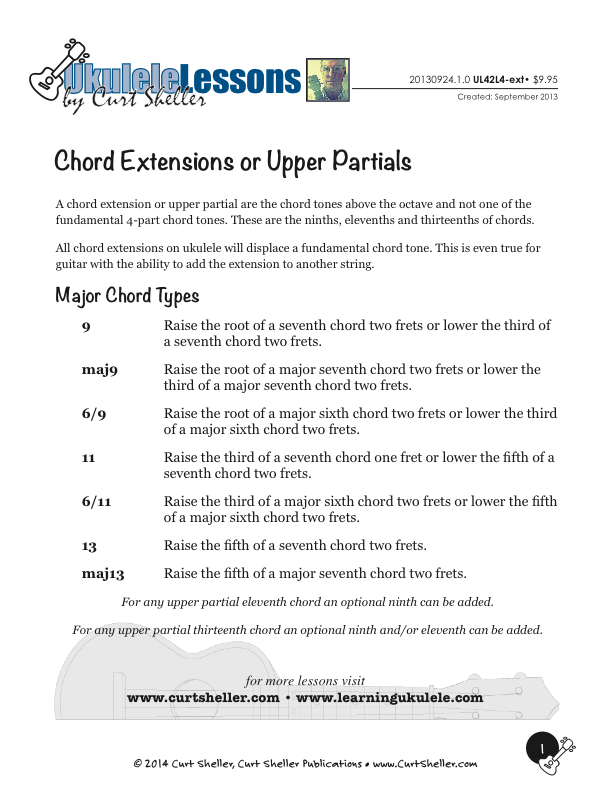
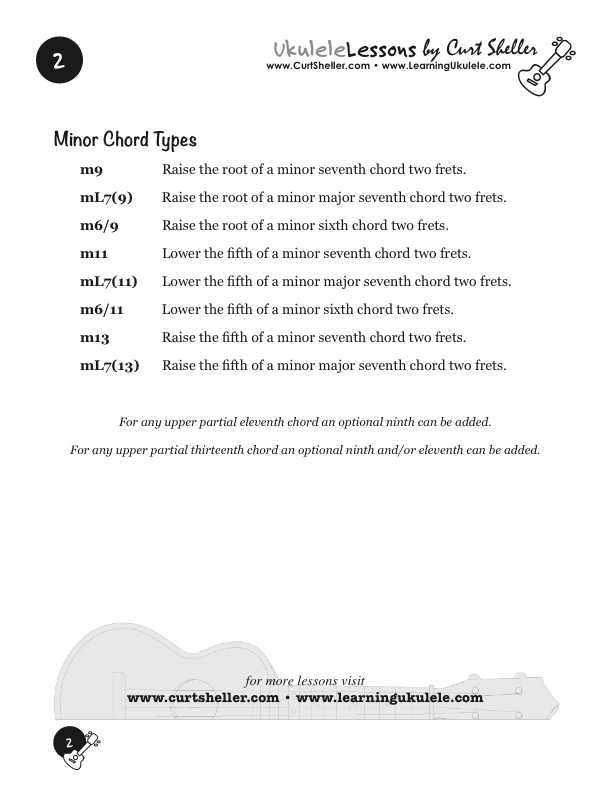
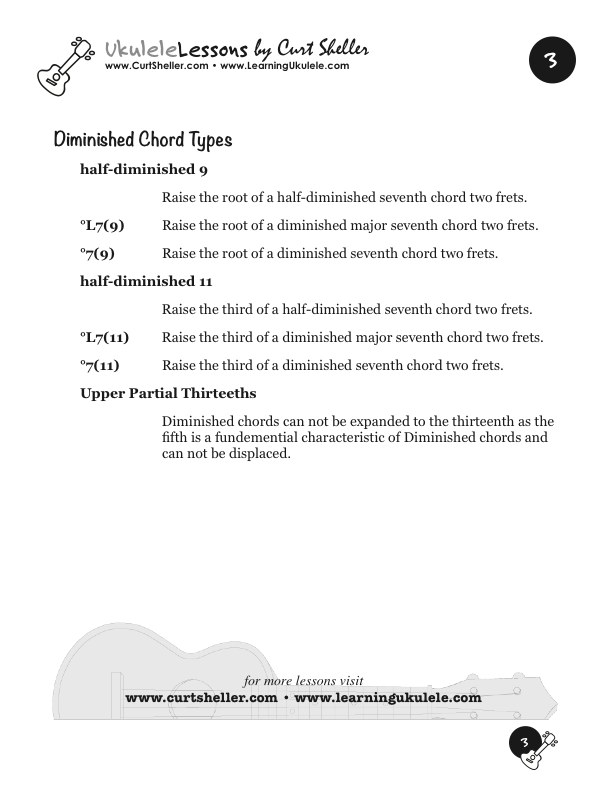





A chord extension or upper partial are the chord tones above the octave and not one of the fundamental 4-part chord tones. These are the ninths, elevenths and thirteenths of chords.
Available for Premium Site Access Plans Only
All chord extensions on ukulele will displace a fundamental chord tone. This is even true for guitar with the ability to add the extension to another string.
C Major Scale Tones to the 13th

The 8, 10, and 12 are NOT used as extensions or upper partials as they are fundamental chord tones for chords built in thirds and duplicate the 1, 3, and 5 of the fundamental chord.
Upper Partials and Chord Extensions
Major Chord Types
- 9
- maj9
- 6/9
- 11
- 6/11
- 13
- maj13
Minor Chord Types
- m9
- mL7(9)
- m6(9)
- 11
- mL7(11)
- m13
- mL7(13)
Note: The
L
chord notation indicates Large, a.k.a. Major Seventh
. This is a modern notational shorthand.
For any upper partial eleventh chord an optional ninth can be added.
For any upper partial thirteenth chord an optional ninth and/or eleventh can be added.
A chord extension or upper partial are the chord tones above the octave and not one of the fundamental 4-part chord tones. These are the ninths, elevenths and thirteenths of chords.
Available for Premium Site Access Plans Only
All chord extensions on ukulele will displace a fundamental chord tone. This is even true for guitar with the ability to add the extension to another string.
C Major Scale Tones to the 13th

The 8, 10, and 12 are NOT used as extensions or upper partials as they are fundamental chord tones for chords built in thirds and duplicate the 1, 3, and 5 of the fundamental chord.
Upper Partials and Chord Extensions
Major Chord Types
- 9
- maj9
- 6/9
- 11
- 6/11
- 13
- maj13
Minor Chord Types
- m9
- mL7(9)
- m6(9)
- 11
- mL7(11)
- m13
- mL7(13)
Note: The
L
chord notation indicates Large, a.k.a. Major Seventh
. This is a modern notational shorthand.
For any upper partial eleventh chord an optional ninth can be added.
For any upper partial thirteenth chord an optional ninth and/or eleventh can be added.
Upper Partials and Chord Extensions
Diminished Chord Types
- dimL7(9)
- dim7(9)
- half-diminished 11
- dimL7(11)
- dimL7(11)
- dim7(11)
- * Upper Partials Thirteenths
Augmented Chord Types
- +7(9)
- +L7(9)
- +7(11)
- +7L7(11)
- * Upper Partials Thirteenths
* Diminished chords can not be expanded to the thirteenth as the fifth is a fundamental characteristic of Diminished chords and can not be displaced.
Using Cmaj7 as an Example
From any voicing of a Cmaj7 chord. You can then use the upper partial as a passing tone or just add it to the Cmaj7, creating a new C major type chord.
Here are four voicings of Cmaj7 from the book, A Guide to Advance Chords for Ukulele by Curt Sheller

The top note (string 1) of each chord is heard as the melody note of the chord.

D, F, F# and A can be added to make Cmaj7 a Cmaj9, Cmaj11 (rare), Cmaj7#11 or a Cmaj13 (rare). A 9th can also be added a C6 chord for a 6/9 chord.
Adding the 9th — D
- 0 0 0 2
- 0 0 0 4 Cmaj9
Adding the 11th —F
- 5 7 7 7
- 5 7 7 8 Cmaj11 very rare and typically for major chord types the 11 is an augmented 11 (#11): 5 7 7 9)
Adding the 13th — A
- 9 11 8 10
- 9 11 8 12 (Cmaj13, Another rare chord. Typically C6 is called for).
- 0 0 0 0
- 2 4 3 3
- 5 7 5 7
- 9 9 8 10
Basically add the note not in the original chord to create a new chord voicing.
Harmonizing Melodies
This is the same principle used to harmonize any melody note. An example is to harmonize a D melody when a Cmaj7 chord is called for. A D melody note and a Cmaj7 chord creates a Cmaj9 chord. Find the Cmaj7 with a C as the highest note on the voicing and move the C note to D. For a modern sound play the voicing with E as the top note and lower the E to D for more contemporary sounding chord.
This principle can be applied to any melody note, not just notes from the scale that the chord came from. Just find the closest chord voicing to the melody note and raise or lower the chord tone on that string to get the correct melody note.
Summary
A little theory or a lot of theory depending on where one is in their development goes a long way.
One of the most influential musicians in my development always said "Tools not rules". Learn the principles behind music and it's a liberating moment in your development.
For complete study of 4-part chords and how to create them, ( Blatant self promo coming ), see my Advanced Chord Series of books for Guitar and Ukulele.
Related Lessons, Videos, Lesson Series, Songs, Books & Reference Charts, Resources & Assets, Workshops are below.
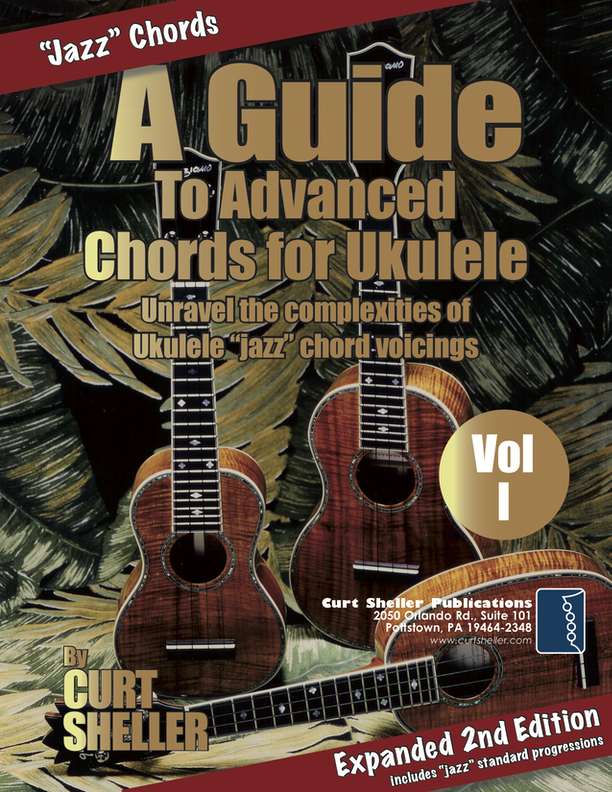
Beyond learning basic Ukulele chords, most players struggle with advanced chords. Commonly called "jazz" chords, these more sophisticated voicings find a wide use in all forms of music. A Guide to Advanced Chords for Ukulele - presents a highly organized and efficient approach to the mysterious subject of advanced chords. Chord dictionaries are not the answer.

Harmonic Analysis is the understanding of the functional sequence of chords. It is the process used to analyze the harmonic structure of a progression, song or composition. This analysis is then used to make scale selections for improvisation and chord substitution.


return in your investment)—it is this— learning the
f*ckingnotes of your OWN instrument. Sorry for the tough talks—but it is sooooo true!


Learn to read single note melodies in the first/open position is a lot easier than you might think. Book: Ukulele – Reading Music Series – Primer

An organized collection of daily practice and reference material for the contemporary ukulele player for developing the vocabulary and knowledge necessary for single note playing. Book: Daily Practice Material for the Contemporary Ukulele
Checkout the Books & Reference Charts for additional Handy, Dandy Reference Charts.

Ukulele Fingerboard Chart for C Tuning, Low or High G – G C E A

Ukulele Fingerboard Chart for G Tuning, Low or High A – D G B E

A handy reference chart of all 15 major and relative minor key signatures. US Letter 8.5 x 11 sized (ANSI-A) , A4



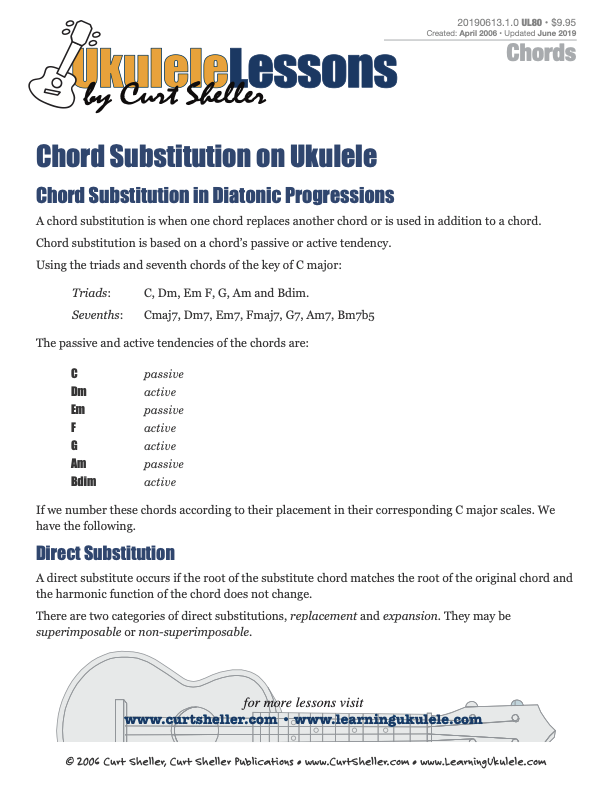


.jpg)